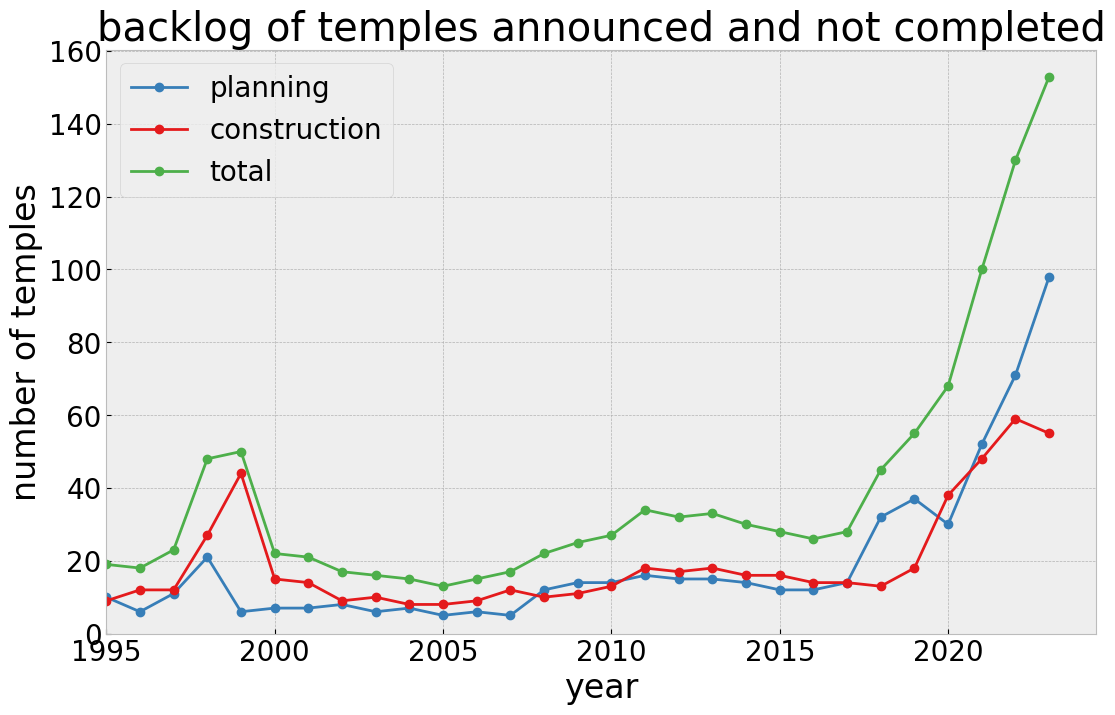06 November 2023
Temple construction revisited
updates to previous analysis
Since I posted my original analysis on the costs of the temple construction program, 3 additional rounds of new temples have been announced at the last 3 general conferences. The publicly available data now show concrete plans for many of the previuosly announced temples. In many cases the sizes of the temples were in line with my assumptions, but in some the announced plans have revealed them to be significantly larger than expected. For this updated analysis, I keep all of the original assumptions, so predictions here may ultimately prove to be conservative.
In this updated analysis I revisit costs, members per temple, and investigate trends in the backlog of announced temples.
Cost
All of the assumptions that went into the previous cost analysis remain unchanged. 18 months ago, the projection was that in the next few years the annual cost of the temple construction program could go as high as 550 million USD or about 8\% of the church’s annual operating budget. In this recalculation, those numbers are now projected to reach as high as 700 million USD, or nearly 10\% of the budget. This is a sufficiently significant departure from previous levels that it is likely the church is diverting funds that may have gone to other use (such as meetinghouse construction) to the temple construction program.
The extraordinary peak in costs assumes temples are built at the same rate they have been in recent years. It is possible that the peak could ultimately be lower if the backlog of projects begins to slow down the rate at which temples are being built, thus spreading the cost over more future years.
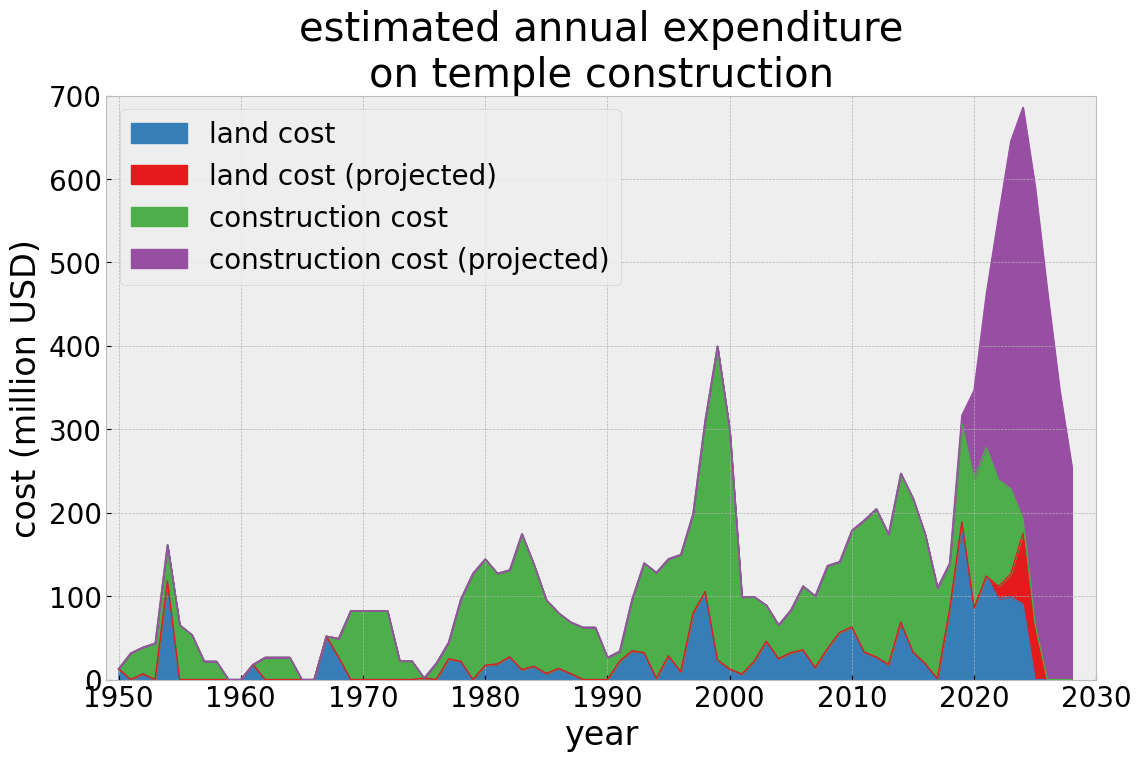
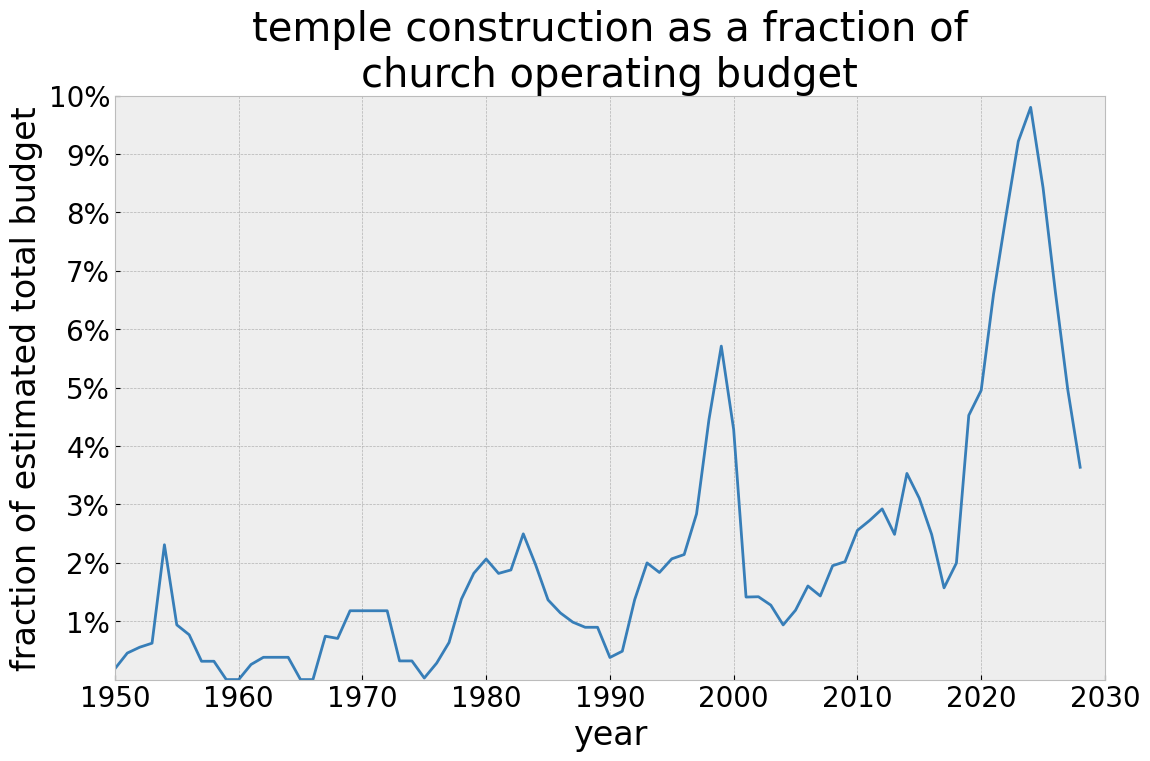
Member/temple ratio
In the previous analysis, the ratio of members to temple space proved particularly revealing. Using the published area in square feet makes it possible to account for the significant variability in sizes of temples. Tracing that trend back to the first pioneer era temples in Utah in the late 1800s showed that historically, there was less than 1 member per square foot of temple for decades. During the post World War II era that began to increase significantly, during a period from roughly the mid 1950s to early 1980s in which most of the temples were converted to use the filmed endowment presentation, thus making more efficient use of the same amount of floor space in each temple. All of the construction since the 1980s, including two prior surges of construction under presidents Kimball and Hinckley, mostly served to maintain the existing level of about 2.5 members per square foot of temple.
The current surge in temple construction is taking us into new territory. In this recalculated analysis, the projection is that before the end of the 2020s there will likely be over 10.4 million square feet of temple space, which would likely mean only 1.75 members per square foot of temple, a level not seen since the late 1960s.
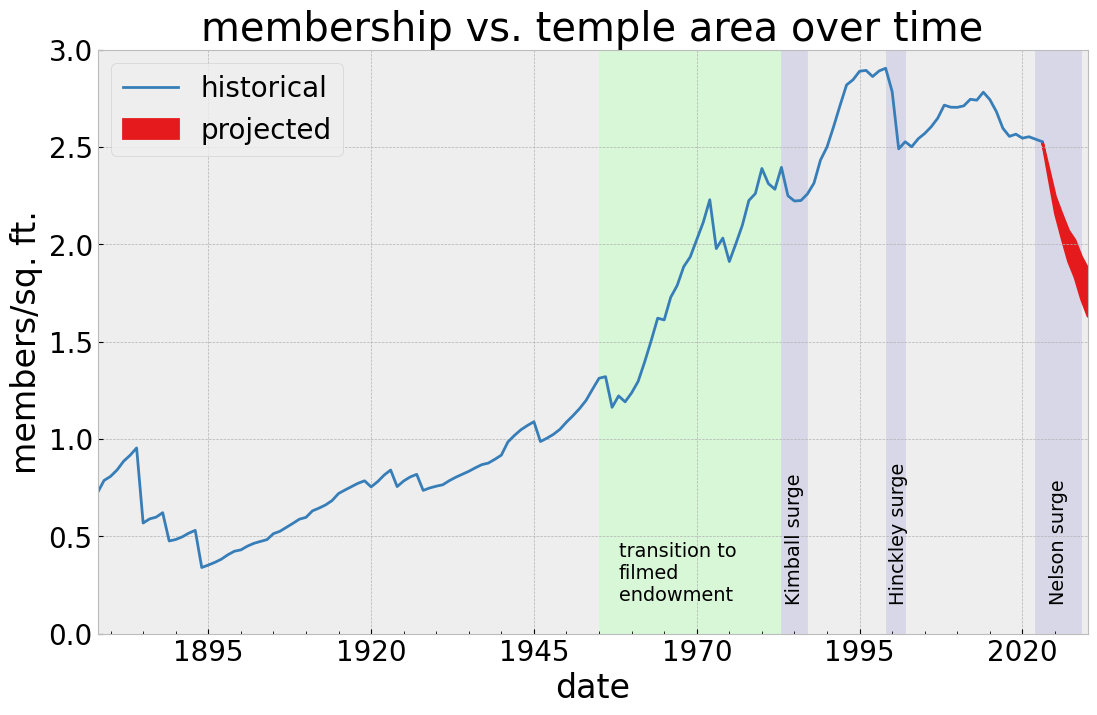
Construction progress
The huge number of announced temples also raises questions about when they might realistically be completed. Since 2008, the average time to groundbreaking for completed temples is about 2 1/2 years, and average time to dedication around 6 years. As we are now approaching 6 years since the big increase in temple announcements began, we will not know for some time how well the temple construction program is keeping pace with announcements, but there are some hints in the data now that the average numbers are likely to increase in the coming years.
The chart below shows temple construction activity by year since 1995, split into announcements, groundbreakings, and dedications. The charts clearly show two peaks. The first is the brief Hinckley-era surge in construction. It consisted of a big number of announcements in 1998, a peak in groundbreaking the following year, and in dedications in 2000. The entire surge was completed fairly quickly. In the context of normal temple building at the time (about 2 completed per year), it was a remarkable achievement. It was likely made possible by in part by various factors, including the introduction of a much smaller design that was replicated on a large scale, and the fact that the goal was somewhat finite in scope.
The current surge in construction, by contrast, is very different, as it’s no longer just a single group of new temples being announced in one year. The number of temples announced per year jumped from a historical average of 4-5 per year to a new normal of over 15 per year in 2018, and jumped again to an even higher new normal of over 30 per year in 2021-2023. We can see a corresponding uptick of groundbreakings beginning in 2020, and an increase in dedications in 2023, which is about a 5 year lag from the jump in announcements in 2018. There will likely be even more dedications next year, but there are reasons to believe the average time to completion may be headed upward, as the number of groundbreakings in 2023 declined from 2022, 3 years after a big jump in announcements. There are complicating factors at work, such as the pandemic.
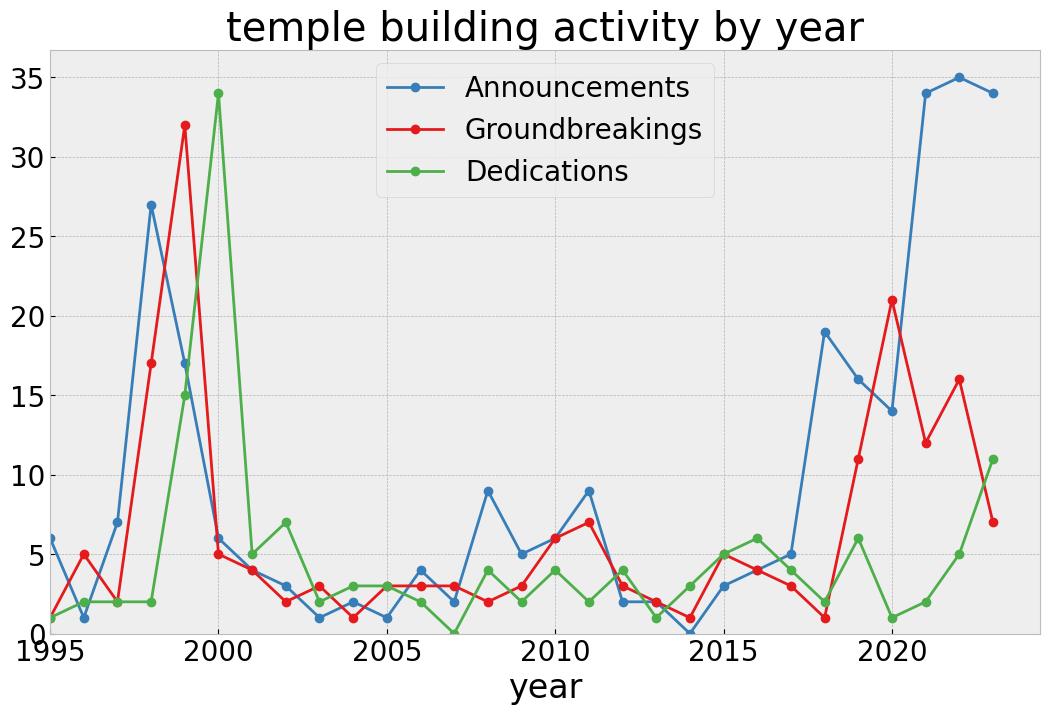
Another measure of the progress of the construction program is to measure the backlog. The plot below shows the backlog levels going back to 1995. The “planning” backlog is defined by the number of temples announced for which a groundbreaking has not taken place at the end of that calendar year. The “construction” backlog is the number for which groundbreaking has taken place but dedication has not.
The original peak in temples in construction phase was in 1999 at just over 40. In recent years the construction backlog has increased to between 50 and 60, and seems to be holding steady at that level. The total backlog, now over 150, is about 3 times what it was in 1999. Much of that backlog is now for temples in the planning phase. The leveling off of the construction backlog since 2021 is an possible indicator that the temple department has reached its maximum capacity given current available resources, and that ground is not being broken on new projects until old ones are completed. If this explanation is correct, we might expect that in the future actual construction time for new temples remains constant, but that the time to groundbreaking from announcement begins to grow significantly.
